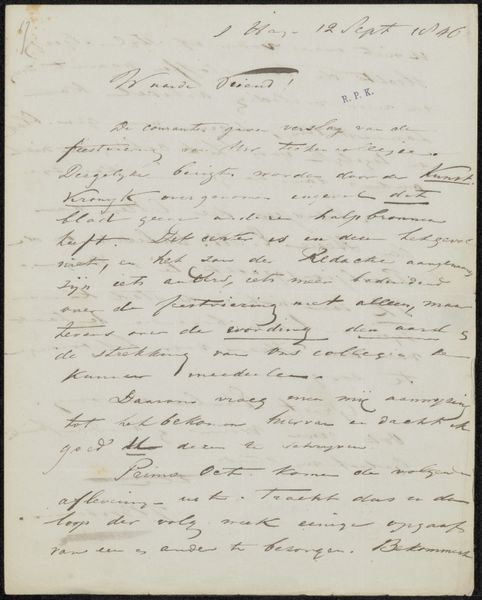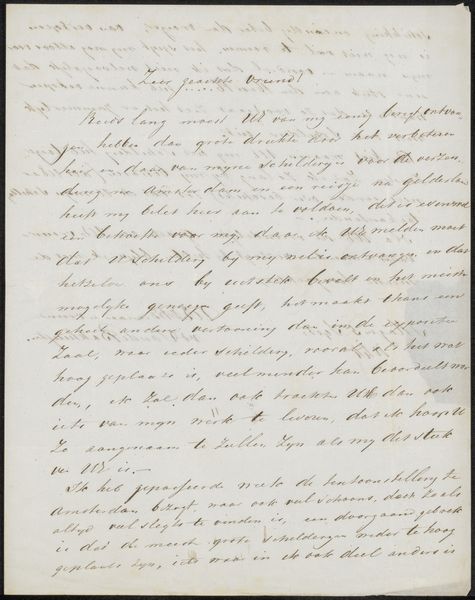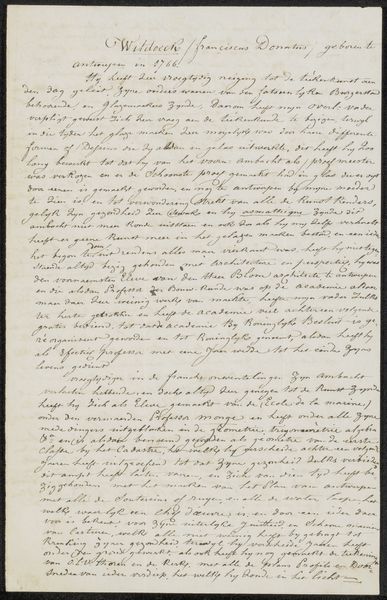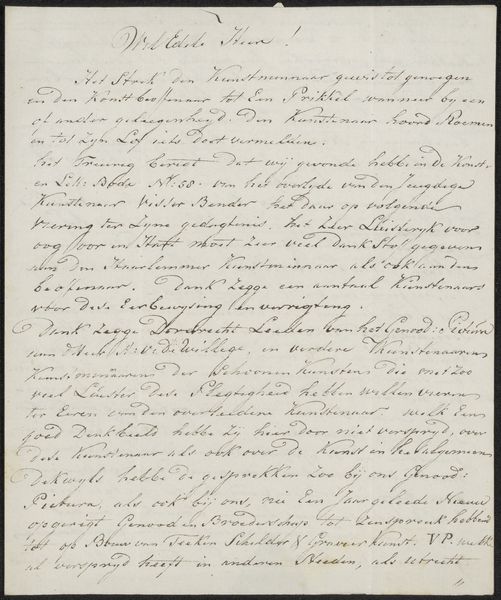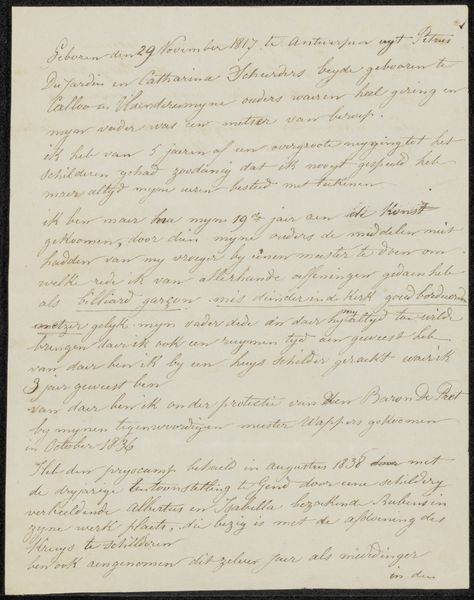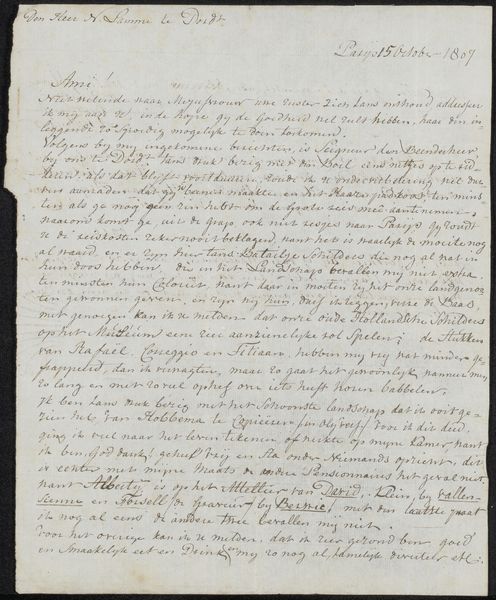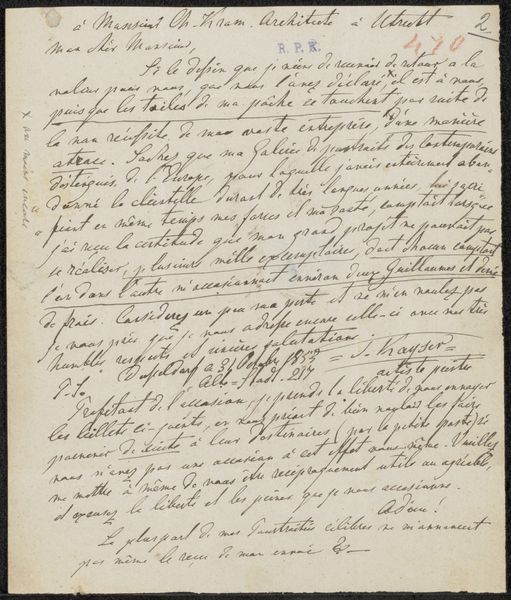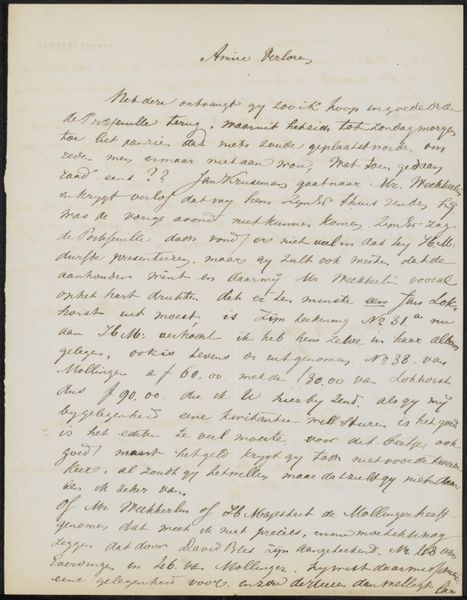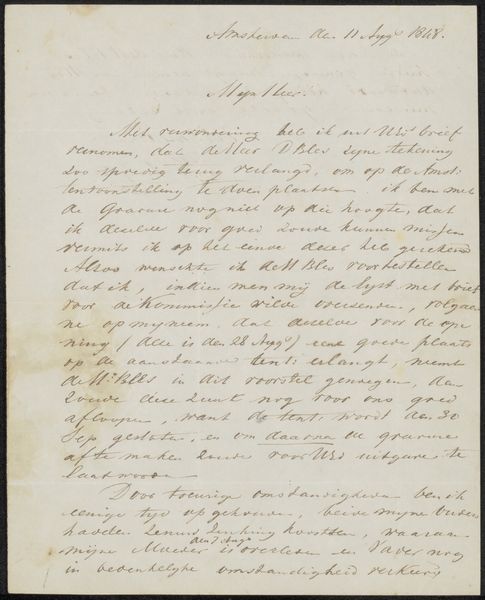
drawing, paper, ink
#
drawing
#
paper
#
ink
#
calligraphy
Copyright: Rijks Museum: Open Domain
Curator: We’re looking at "Brief aan Frans Buffa en Zonen" (Letter to Frans Buffa and Sons) by David Bles, possibly dating to 1862 or 1863. It’s currently held in the Rijksmuseum. Primarily ink on paper, a drawing, showcasing quite prominent calligraphy. What’s your first reaction to this document? Editor: A sense of intimacy. The handwriting, the personal tone… it feels like we're eavesdropping on a private correspondence. Curator: Precisely. Bles, as a prominent genre painter, was deeply embedded in the art world of his time. This letter likely relates to his dealings with Frans Buffa en Zonen, a well-known art dealership. The Rijksmuseum is a fitting place to preserve these artistic letters. They can offer insight into art’s public role, but more interestingly they offer primary evidence to commercial artistic circles and artistic agency. Editor: The calligraphy itself is striking. The elegant flourishes and varying line weights create a beautiful visual rhythm. The R.P.K at the top right and signature at the bottom each reveal important details. Is there a cultural significance to this style of script that we're seeing here? Curator: Absolutely. During the 19th century, handwriting was a highly valued skill and a reflection of one’s education and social standing. Calligraphy was more than just writing; it was a form of self-presentation and societal adherence. A careful, practiced hand was the equivalent of professional networking and the contemporary email or memo. Editor: I notice, even without fully understanding the text, that there seems to be an emotional appeal or urgency here. The repetition of certain letterforms creates an almost desperate rhythm… it makes you wonder what pressing matter Bles was addressing. Curator: Indeed. Archival finds often prompt more questions than answers. That sense of longing is perhaps something everyone can still relate to today. Editor: Examining art such as Bles’s letters transforms our perspective, illuminating how symbolism transcends specific artwork into something collectively understandable and shared. Curator: Precisely. I feel like these intimate archival finds transform and make sense of public art spaces like the Rijksmuseum.
Comments
No comments
Be the first to comment and join the conversation on the ultimate creative platform.


